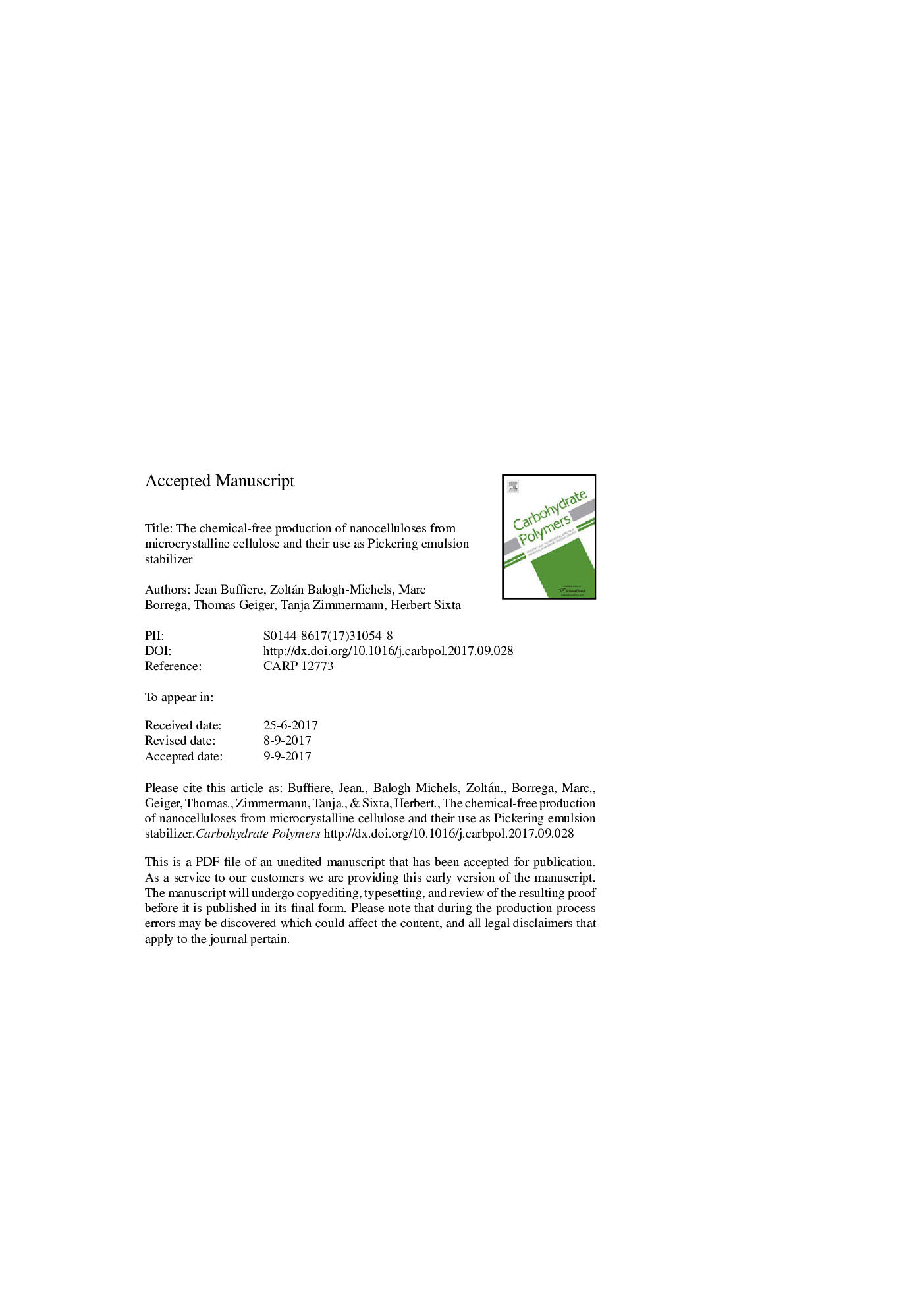| Article ID | Journal | Published Year | Pages | File Type |
|---|---|---|---|---|
| 5156728 | Carbohydrate Polymers | 2017 | 26 Pages |
Abstract
This paper takes a comparative approach in characterizing two types of nano-scale cellulosic particles obtained using chemical-free pathways, either by nearcritical water treatment or by high-shear homogenization from the same microcrystalline cellulose (MCC). The nearcritical water treatment efficiently depolymerized cellulose, producing a solid precipitated fraction of low-molecular-weight material containing cellulose II, while homogenization mechanically deconstructed MCC without altering its molecular structure. Both pathways yielded nanocellulose-like materials yet with different morphologies. The mechanically produced, rod-like particles were obtained with high yield. In contrast, the hydrothermal precipitate exhibited more hydrophobic ribbon-like particles that provided a greater level of particle-particle interaction. Both materials successfully acted as stabilizers for oil-in-water Pickering emulsions; however, the hydrothermally-produced material exhibited superior performance, with stable emulsions obtained upon addition of as low as 1.0Â wt.% cellulose. These two pathways are highly relevant for altering the structure and properties of MCC and for formulating new, sustainably produced nanocellulose-based materials.
Related Topics
Physical Sciences and Engineering
Chemistry
Organic Chemistry
Authors
Jean Buffiere, Zoltán Balogh-Michels, Marc Borrega, Thomas Geiger, Tanja Zimmermann, Herbert Sixta,
